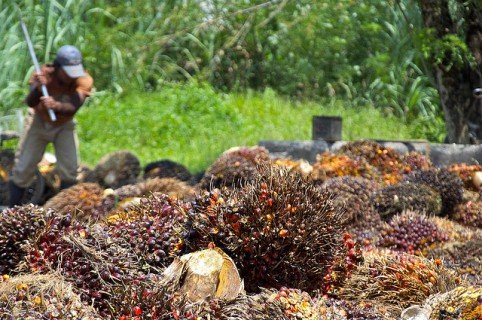Imagine a plate heaped full of golden brown, crispy-on-the-outside, juicy-on-the-inside, perfectly seasoned, sinfully delicious fried chicken. Now, imagine not having any oil to fry said chicken. Yes, I shudder in horror at the thought, too (along with not having internet access). Nightmare aside, we have access to delicious fried food all thanks to oil palm trees and the palm oil they produce, which we use mainly for cooking, as well as its by-products like soaps, detergents, candles, and cosmetics.
Having lots of oil palm plantations should be a good thing, right? Well, that may not be exactly true, because in order to plant more oil palms, more land is needed, and to get more land, forests have to be cleared, which could lead to deforestation, loss of unique flora and fauna, pollution, etc. Therefore, we’ve collected some important facts to (hopefully) increase awareness about the good, and not-so-good, things about oil palm trees and palm oil.
Just one teeny tiny thing I’d like to get straight before we proceed…
Oil palm = tree
Palm oil = oil produced from the fruits of the oil palm tree
Okay? Good.
- Oil palm is the most efficient oilseed crop in the world.
- The earliest archaeological evidence of palm oil use is an earthenware jar containing palm oil residue found in a 5,000-year-old Egyptian tomb.
- Indonesia and Malaysia produce about 85% of the world’s palm oil.
- The oil palm tree has an average lifespan of 25-30 years.
- An oil palm tree can produce fruit bunches from 3 years after being planted.
- China is the largest consumer of oils and fats, followed by the EU, India, and US.
- About 60% of Malaysia’s land area is covered by forests, which includes a large portion of virgin forest dating back 130 million years.
- More than 13 million hectares of rain forest have been destroyed just to plant oil palms.
- Over the past 10 years, the orangutan population has decreased by 50% as a result of habitat loss from deforestation for palm oil plantations.
- More than 40% of the indigenous people in Malaysia and Indonesia have lost their homes to deforestation.
- Unlike rain forest trees, oil palms produce less oxygen, leading to a rise in atmospheric pollution.
- Clearing one hectare (about two square acres) of peat forest can release 6,000 tons of carbon dioxide.
Brings new meaning to the phrase “too much of a good thing”, doesn’t it? You may never see oil palm plantations the same way again, after reading the last few points. Let’s hope that our kelapa sawait R&D researchers will be able to find more and improved sustainable ways to keep up our precious palm oil production while caring for the environment at the same time.
Now, don’t even get me started on the difference between goreng pisang and pisang goreng, because that will be a whole other story……
Information from:
Sime Darby (link)
EcoKnights Malaysia (link)
One Green Planet (link)







